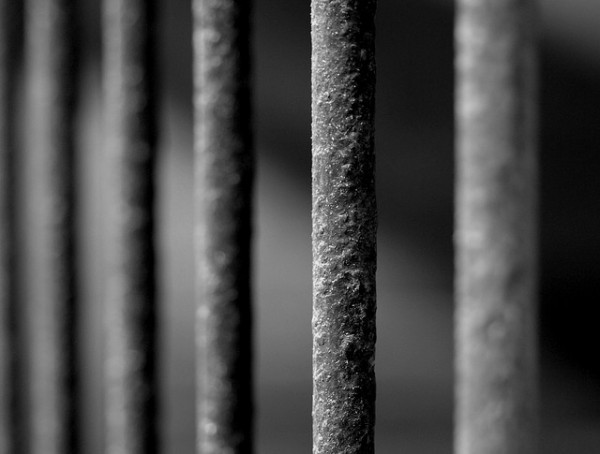
Henry Hernandez served half of his two years in the custody of the Department of Juvenile Justice at the Preston Youth Correctional Facility. The initial intake dorm he stayed in was overcrowded with more than 60 youth from rival gangs fighting everyday, he said. Fights of more than five guys at a time broke out almost every week. The guards would use pepper spray or gas bombs to get things under control.
“There would be so much tension,” Hernandez said.
Pictures of kids in cages at what was then called California Youth Authority facilities adorned the front pages of California newspapers in the early 2000s. Media stories in the first half of that decade charged the Youth Authority with a range of abuses, including unlicensed medical and mental health treatment, and extreme use of force and solitary confinement.
Reforms to the juvenile justice system then reduced the population of the Youth Authority, now called the Division of Juvenile Justice, by 88% over the past decade.
Today, DJJ handles less than one percent of the 225,000 youths arrested in California each year.
Almost all the youth left in DJJ, about 1,200 people, are serious violent juvenile offenders or serious sex offenders, according to DJJ reports.
Last Thursday Gov Brown suggested eliminating DJJ altogether in his proposed budget plan. If the Legislature passes the plan the responsibility for these youth would shift back to the counties.
But even if the budget doesn’t pass as proposed there is a possibility that DJJ will close, and these serious juvenile offenders will be sent to state prison with adults.
State legislators proposed closing DJJ in early 2011. The initial language of adult prison realignment forbade county courts from sending any more juvenile offenders to DJJ facilities. DJJ would have been shut down as current inmates left the system.
The provision didn’t make it into law, but DJJ may shut down anyway. If the state doesn’t have enough money to run DJJ as of Jan 1, 2012, it will begin charging counties the cost of housing youth offenders – $125,000 annually per inmate.
If the state begins to levy these hefty fees, counties may start charging more youth as adults, shifting incarceration costs back to the state by sending youth to adult prison.
Sending serious youth offenders to prison costs a third of what it takes to send them to DJJ, according to UC Berkeley law professor Barry Krisberg.
“We could have many more youth put in the prison system, and everything we know says that’s a bad idea,” Krisberg said.
DJJ is a difficult place, Hernandez said, but he credits the time he spent there between 2009 and 2011 with helping him turn his life around.
While inside, the 17-year-old Hernandez attended classes to get his high school diploma, but he said fights usually broke out in class. Eventually, he said, teachers gave up trying to teach.
Originally from Oakland, Hernandez joined the Soreño gang before ending up in DJJ.
“I wanted to be somebody in the hood,” said Hernandez.
That changed when he was in detention.
“While I was in there, I started seeing the gang that I used to belong to, they did me dirty,” said Hernandez. So he calmed down, he said, and stopped fighting.
Eventually, after three months of good behavior, Hernandez went to a fire camp where he was trained as a volunteer firefighter. He liked his time in the camp, where anyone caught or suspected of fighting was automatically sent back to a detention facility.
“Right there, you‘d see people from rival gangs talking, playing dominoes, sit down and have regular conversations,” Hernandez said. “I started to notice these people are just like me.”
State facilities have dramatically improved since 2005, Krisberg said, after a lawsuit prompted many reforms. They included providing treatment and rehabilitation services, reducing violence and the use of force, improving medical and mental health care, reducing the use of lock-ups and providing better education programs.
But the improvements to the DJJ facilities have cost money. Even though the population has decreased sharply, the budget for these facilities is close to pre-reform levels, Krisberg said.
DJJ still needs improvement to meet the needs of high-risk youth, Krisberg added, but the closure of DJJ would be a mistake.
Alameda County Chief Probation Officer David Muhammad agrees. Ten years ago, as the head of The Mentoring Center in Oakland, Muhammad was one of the youth authority’s biggest critics.
“It is interesting to find myself on the other side now,” Muhammad said.
A lack of state revenue looks likely, Muhammad said, and will mean most counties stop sending their youth to DJJ as a result.
“Its underhanded, because you were going to do the opposite,” Muhammad said. “The state was going to pay counties for keeping youth.”
Henry Hernandez would have preferred to serve his time in a county facility, but he thinks his time at the DJJ fire camp helped him change his life.
“There was a big fire in somebody’s ranch. People passed by cheering and I felt good – like people are finally appreciating me,” Hernandez said. “It made me feel good about myself.”
He has now been out for nine months and has tested clean in all of his drug tests.
Hernandez has worked on changing his demeanor, too. He still has many visible gang tattoos, but has stopped wearing baggy clothes and shaving his head.
“If somebody who knew me from the past saw me,” Hernandez said, “they’d be like ‘woah’.”
Callie Shanafelt is a correspondent for the California Health Report at www.calhealthreport.org.





